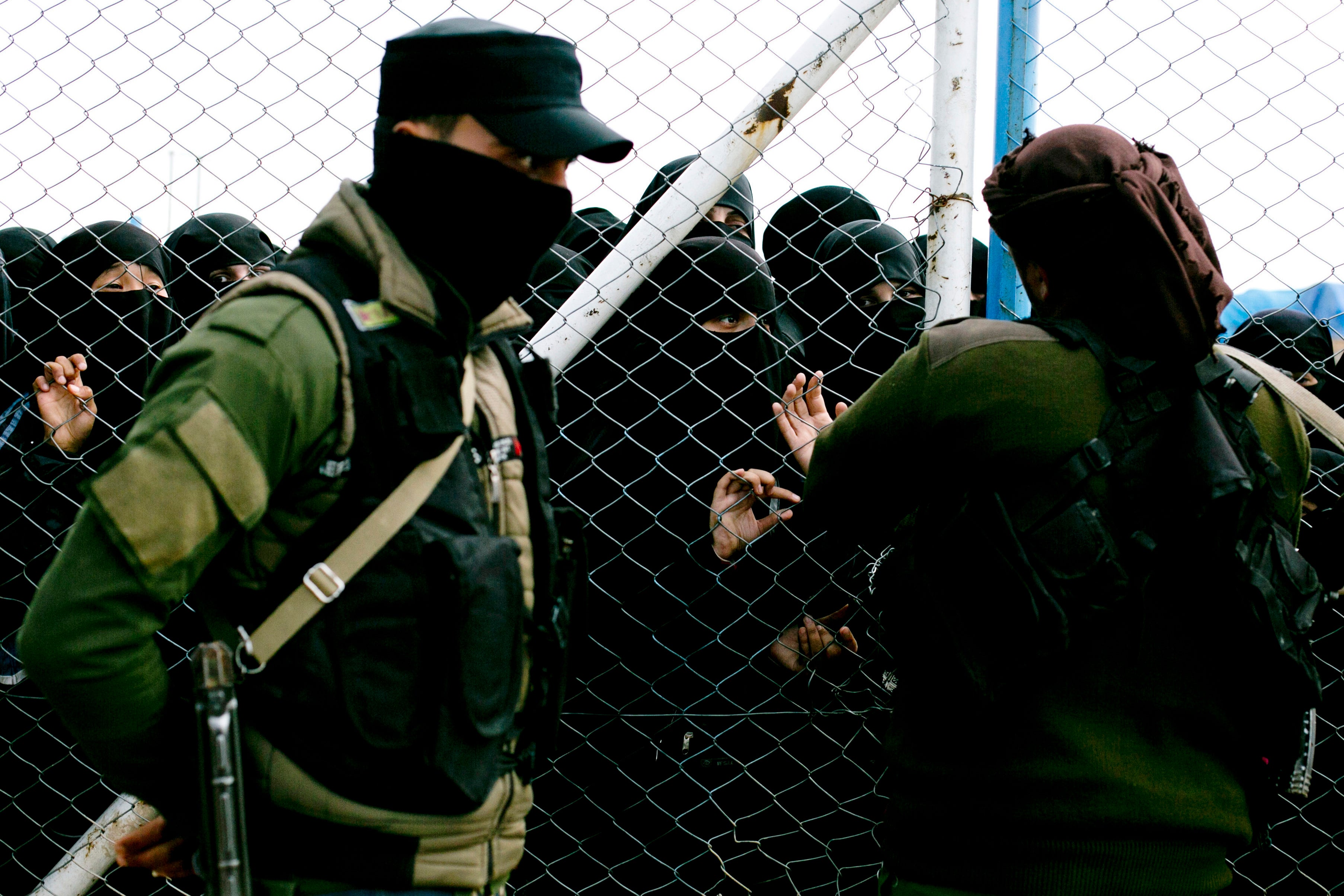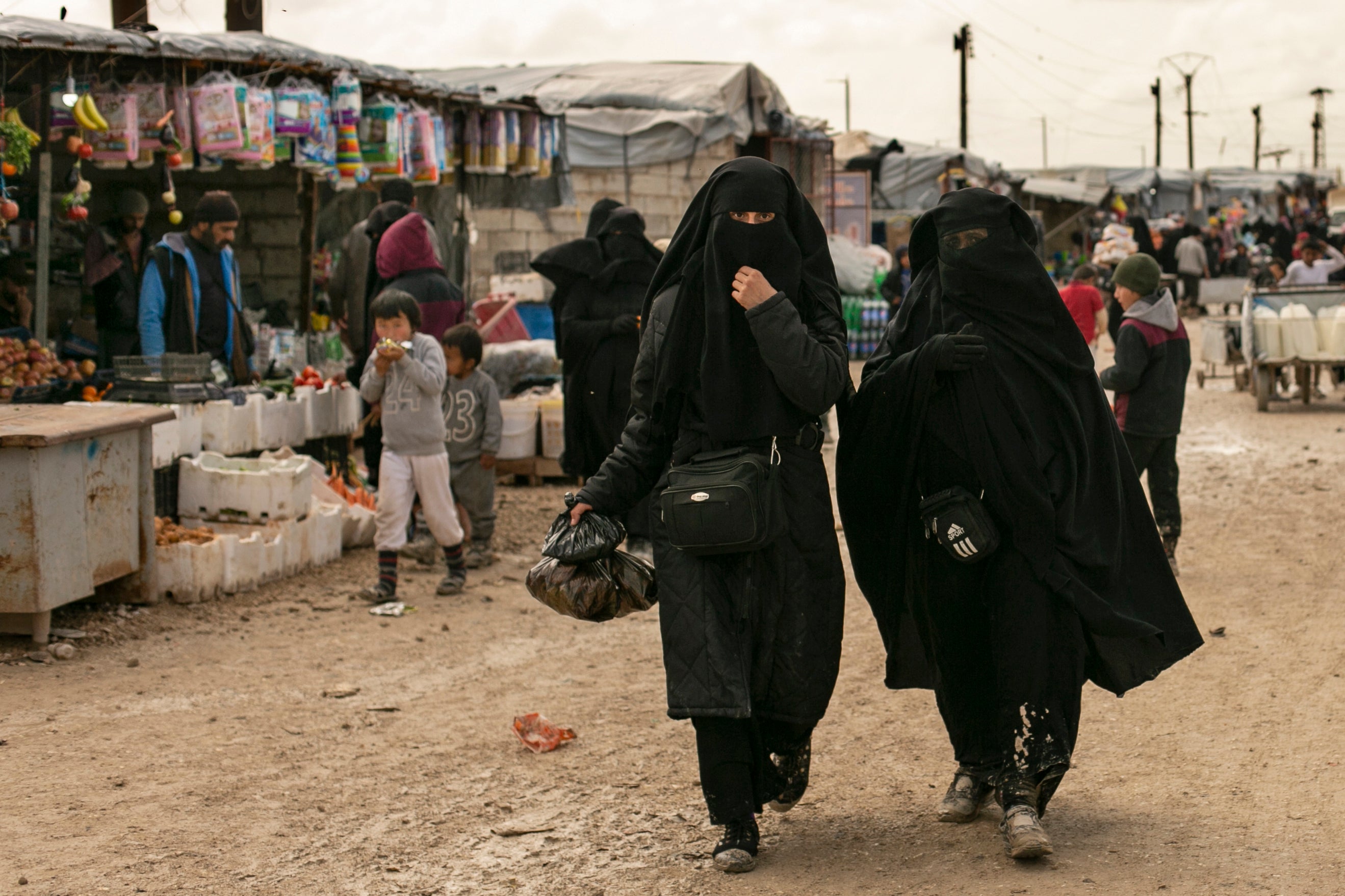Killings surge in Syria camp housing Isis families
Al-Hol camp will be the ‘womb that gives birth to new generations of extremists’, researcher warns

Your support helps us to tell the story
From reproductive rights to climate change to Big Tech, The Independent is on the ground when the story is developing. Whether it's investigating the financials of Elon Musk's pro-Trump PAC or producing our latest documentary, 'The A Word', which shines a light on the American women fighting for reproductive rights, we know how important it is to parse out the facts from the messaging.
At such a critical moment in US history, we need reporters on the ground. Your donation allows us to keep sending journalists to speak to both sides of the story.
The Independent is trusted by Americans across the entire political spectrum. And unlike many other quality news outlets, we choose not to lock Americans out of our reporting and analysis with paywalls. We believe quality journalism should be available to everyone, paid for by those who can afford it.
Your support makes all the difference.A surge in killings at a camp housing families of Isis members in northeastern Syria has seen 20 men and women slain in the last month.
Among the dead was a policeman shot with a pistol equipped with a silencer, a local official gunned down while his son was wounded and an Iraqi man who was beheaded.
The killings at the al-Hol camp – nearly triple the deaths in previous months – are largely believed to have been carried out by Isis militants punishing perceived enemies and intimidating anyone who strays from their extremist line, Syrian Kurdish officials, who run the camp but say they struggle to keep it under control, said.
At least five of the dead were female residents of the camp, according to the Rojava Information Center (RIC), an activist collective that tracks news in areas controlled by the SDF.
All 20 victims were Syrian or Iraqi citizens and most were killed in their tents or shelters at night, most shot in the back of the head at close range, the RIC said.
The jump in violence has heightened calls for countries to repatriate their citizens languishing in the camp, home to some 62,000 people with more than 80 per cent women and children. But those repatriations have slowed dramatically because of the coronavirus pandemic, officials say.
If left there, the thousands of children in the camp risk being radicalised, both local and United Nations officials warn.
“Al-Hol will be the womb that will give birth to new generations of extremists,” Abdullah Suleiman Ali, a Syrian researcher who focuses on jihadi groups, said.
The majority of the camp’s residents are Iraqis and Syrians, but there are also some 10,000 people from 57 other countries, housed in a highly secured separate area known as the Annex. Many of them remain Isis supporters.
The camp has long been chaotic, with the hardcore militants among its population enforcing their will on others and seeking to prevent them from cooperating with Kurdish authorities guarding it.
Isis cells in Syria are in contact with residents of the camp and support them, said a senior Kurdish official Badran Cia Kurd.
“Anyone who tries to reveal these contacts or stops dealing with Daesh is subjected to death,” he said, using the Arabic acronym for Isis.
The US-backed SDF tweeted last week that, backed by air surveillance from the coalition, they detained an Isis family smuggler in the area of Hadadia near the camp.
“There are several reasons behind the increase of crime, including attempts by Daesh [Isis] members to impose their ideology in the camp against civilians who reject it,” said Mr Ali, the researcher.
The immediate cause for the increase in killings was not known.

In November, Kurdish authorities began an amnesty programme for the 25,000 Syrian citizens in the camp, allowing them to leave.
Some speculate that, since those taking amnesty must register and work with authorities, the programme may have prompted slayings to keep residents in line.
Many Syrians fear leaving the camp because they may face revenge attacks in their hometowns from those who suffered under Isis rule.
Whatever the cause, the bloodshed points to the Isis strength within the camp.
The local civilian Kurdish authority known as the Autonomous Administration of North and East Syria warned in late January that some sides are trying to revive Isis and the authority cannot face this crisis on its own.
Almost two years have passed since the US-led coalition captured the last sliver of territory held by Isis, ending their self-declared caliphate that covered large parts of Iraq and Syria.
The brutal war took several years and left US-allied Kurdish authorities in control of eastern and northeast Syria, with a small presence of several hundred American forces still deployed there.
Since then, remaining Isis militants have gone underground in the Syrian-Iraqi border region, continuing an insurgency.
Though attacks in Syria are lower than they were in late 2019, Isis sleeper cells continue to strike Syrian government troops, forces of the Kurdish-led Syrian Democratic Forces and civilian administrators.
Additional reporting by agencies



Join our commenting forum
Join thought-provoking conversations, follow other Independent readers and see their replies
Comments